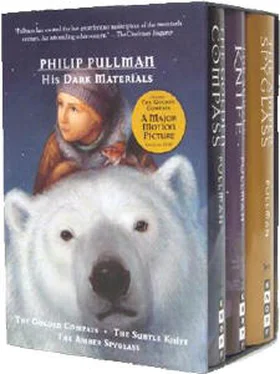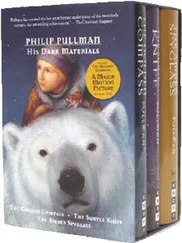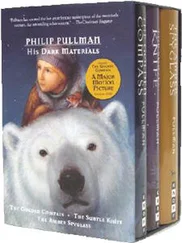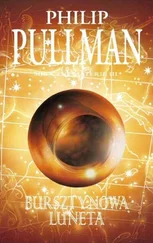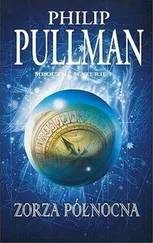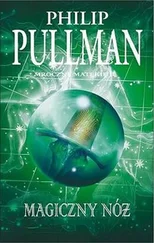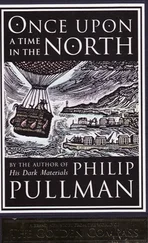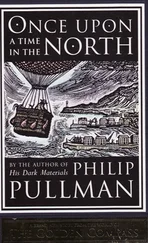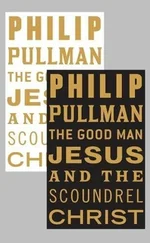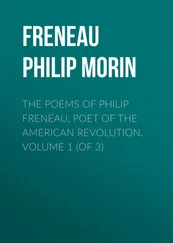The Gallivespian urged his blue hawk upward at once, and the bird flew straight to the still‑open cabin door. The watchers below could see the woman’s head looking this way and that, and the golden monkey, likewise, and they could see that neither of them noticed the little figure of Lord Roke leaping from his hawk into the cabin behind them.
A moment later, the intention craft began to move, and the hawk wheeled away to skim down to Lord Asriel’s wrist. No more than two seconds later, the aircraft was already vanishing from sight in the damp and starry air.
Lord Asriel watched with rueful admiration.
“Well, King, you were quite right,” he said, “and I should have listened to you in the first place. She is Lyra’s mother; I might have expected something like that.”
“Aren’t you going to pursue her?”‘ said King Ogunwe.
“What, and destroy a perfectly good aircraft? Certainly not.”
“Where d’you think she’ll go? In search of the child?”
“Not at first. She doesn’t know where to find her. I know exactly what she’ll do: she’ll go to the Consistorial Court and give them the intention craft as an earnest pledge of good faith, and then she’ll spy. She’ll spy on them for us. She’s tried every other kind of duplicity: that one’ll be a novel experience. And as soon as she finds out where the girl is, she’ll go there, and we shall follow.”
“And when will Lord Roke let her know he’s come with her?”
“Oh, I think he’ll keep that as a surprise, don’t you?” They laughed, and moved back into the workshops, where a later, more advanced model of the intention craft was awaiting their inspection.
Chapter 17. Oil And Lacquer
Mary Malone was constructing a mirror. Not out of vanity, for she had little of that, but because she wanted to test an idea she had. She wanted to try and catch Shadows, and without the instruments in her laboratory she had to improvise with the materials at hand.
Mulefa technology had little use for metal. They did extraordinary things with stone and wood and cord and shell and horn, but what metals they had were hammered from native nuggets of copper and other metals that they found in the sand of the river, and they were never used for toolmaking. They were ornamental. Mulefa couples, for example, on entering marriage, would exchange strips of bright copper, which were bent around the base of one of their horns with much the same meaning as a wedding ring.
So they were fascinated by the Swiss Army knife that was Mary’s most valuable possession.
Atal, the zalif who was her particular friend, exclaimed with astonishment one day when Mary unfolded the knife and showed her all the parts, and explained as well as she could, with her limited language, what they were for. One attachment was a miniature magnifying glass, with which she began to burn a design onto a dry branch, and it was that which set her thinking about Shadows.
They were fishing at the time, but the river was low and the fish must have been elsewhere, so they let the net lie across the water and sat on the grassy bank and talked, until Mary saw the dry branch, which had a smooth white surface. She burned the design, a simple daisy, into the wood, and delighted Atal; but as the thin line of smoke wafted up from the spot where the focused sunlight touched the wood, Mary thought: If this became fossilized, and a scientist in ten million years found it, they could still find Shadows around it, because I’ve worked on it.
She drifted into a sun‑doped reverie until Atal asked:
What are you dreaming?
Mary tried to explain about her work, her research, the laboratory, the discovery of shadow particles, the fantastical revelation that they were conscious, and found the whole tale gripping her again, so that she longed to be back among her equipment.
She didn’t expect Atal to follow her explanation, partly because of her own imperfect command of their language, but partly because the mulefa seemed so practical, so strongly rooted in the physical everyday world, and much of what she was saying was mathematical; but Atal surprised her by saying, Yes – we know what you mean – we call it … and then she used a word that sounded like their word for light .
Mary said, Light?
Atal said, Not light, but … and said the word more slowly for Mary to catch, explaining: like the light on water when it makes small ripples, at sunset, and the light comes off in bright flakes, we call it that, but it is a make‑like.
Make‑like was their term for metaphor, Mary had discovered.
So she said, It is not really light, but you see it and it looks like that light on water at sunset?
Atal said, Yes. All the mulefa have this. You have, too. That is how we knew you were like us and not like the grazers, who don’t have it. Even though you look so bizarre and horrible, you are like us, because you have – and again came that word that Mary couldn’t hear quite clearly enough to say: something like sraf , or sarf , accompanied by a leftward flick of the trunk.
Mary was excited. She had to keep herself calm enough to find the right words.
What do you know about it? Where does it come from?
From us, and from the oil , was Atal’s reply, and Mary knew she meant the oil in the great seedpod wheels.
From you?
When we have grown up. But without the trees it would just vanish again. With the wheels and the oil, it stays among us.
When we have grown up … Again Mary had to keep herself from becoming incoherent. One of the things she’d begun to suspect about Shadows was that children and adults reacted to them differently, or attracted different kinds of Shadow activity. Hadn’t Lyra said that the scientists in her world had discovered something like that about Dust, which was their name for Shadows? Here it was again.
And it was connected to what the Shadows had said to her on the computer screen just before she’d left her own world: whatever it was, this question, it had to do with the great change in human history symbolized in the story of Adam and Eve; with the Temptation, the Fall, Original Sin. In his investigations among fossil skulls, her colleague Oliver Payne had discovered that around thirty thousand years ago a great increase had taken place in the number of shadow particles associated with human remains. Something had happened then, some development in evolution, to make the human brain an ideal channel for amplifying their effects.
She said to Atal:
How long have there been mulefa ?
And Atal said:
Thirty‑three thousand years.
She was able to read Mary’s expressions by this time, or the most obvious of them at least, and she laughed at the way Mary’s jaw dropped. The mulefa ’s laughter was free and joyful and so infectious that Mary usually had to join in, but now she remained serious and astounded and said:
How can you know so exactly? Do you have a history of all those years?
Oh yes , said Atal. Ever since we have had the sraf, we have had memory and wakefulness. Before that, we remembered nothing.
What happened to give you the sraf?
We discovered how to use the wheels. One day a creature with no name discovered a seedpod and began to play, and as she played she –
She?
She, yes. She had no name before then. She saw a snake coiling itself through the hole in a seedpod, and the snake said…
The snake spoke to her?
No, no! It is a make‑like. The story tells that the snake said, “What do you know? What do you remember? What do you see ahead?” And she said, “Nothing, nothing, nothing.” So the snake said, “Put your foot through the hole in the seedpod where I was playing, and you will become wise.” So she put a foot in where the snake had been. And the oil entered her blood and helped her see more clearly than before, and the first thing she saw was the sraf. It was so strange and pleasant that she wanted to share it at once with her kindred. So she and her mate took the seedpods, and they discovered that they knew who they were, they knew they were mulefa and not grazers. They gave each other names. They named themselves mulefa. They named the seed tree, and all the creatures and plants.
Читать дальше
